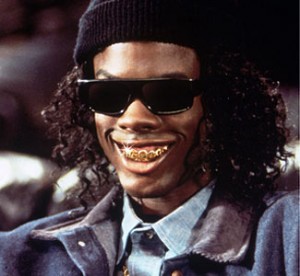Comedian Chris Rock embarrassed himself at this year’s New York Film Critic Circle dinner when presenting a prize to the Ken Burns film The Central Park Five. The black, Brooklyn-born Rock declared “It makes you think I was wrong. Burns shows we were all wrong!” about the April, 19, 1991 incident in which five black New York youths (Antron McCray, Kevin Richardson, Raymond Santana, Korey Wise and Yuself Salaam) were defamed in local news media after police intimidation had forced them into falsely confessing to the rape and near-murder of a woman then identified as “The Central Park Jogger.”
Rock’s unroyal “We” was politically submissive (and Burns repeated the trope in his acceptance speech: “Everybody in this room got it wrong”). It revealed how class prerogative is felt by cultural pets like Rock and Burns–financially well-compensated and publicly celebrated representatives of the social elite. It was apparent from his deferential presentation that Rock no longer identified with those black New Yorkers who held to their criticism of the crime investigation–particularly those outraged at how media coverage of the Central Park case typically treated it as an opportunity to further stigmatize, condemn and assert superiority over New York’s least powerful social groups.
Classic New York disposition talks back to authority and remains skeptical toward the media’s official versions of controversial social events; it preserves personal, complex, aggrieved, vexing, street savvy. The “Jogger” case (portrayed in tabloid headlines as the “wilding” incident, describing black youths marauding Central Park and terrorizing citizens) revealed a panicky power reflex. Police and media responded to hiphop culture by slapping back the rising social prominence of disenfranchised black youth and reasserting traditional racist fears.
Any sentient New York viewer, including Rock, should know these things. These were perceptions and projections that only the mainstream media–the voice of the empowered class–got wrong, perversely influencing legal and judicial process. Burns’ film doesn’t dig into this “court of public opinion” corruption; as in his PBS documentaries, he presents an “official” review of events that questions status quo media prejudices only in hindsight.
Rock internalized and accepted these preconceptions in his disloyal “we.” Rock’s “we” certainly did not include New York’s black-owned media like the weekly newspaper The City Sun that actively questioned police and media performance regarding the case. Rock also ignored the extraordinary Joan Didion essay “Sentimental Journeys” for The New York Review of Books that in 1992 laid out the Byzantine patterns of New York ethnic bias evident in social power, political influence and media practice.
By falling way short of Didion’s inquiry and her “J’accuse!” Burns’ doc 9 airing tonight on PBS) creates a worthless new myth that absolves citizen skepticism. He misuses his “official” status–just as Rock misused his celebrity status–to render independent thinking, political skepticism and ethnic responsibility impossible.
In The Central Park Five media-class imperiousness overshadows the story of the five youths as just another one of the eight million New York stories that never get told until too late. Burns glides past the years and opportunities stolen from these men; his close-ups stare back vacantly at the barely suppressed rage and inconceivable damage in their suddenly aged faces.
For Rock to ratify this indifference shows his own coolness to the abuse of authority that is part of New York class and race reality–realities Rock’s dubious stand-up humor turns into racially exploitive cynicism (quoted in a New York Times op-ed as recently as today). Burns inserts declarations of this cynicism by only a few of his “official” interviews. MIT historian Craig Steven Wilder says: “I want us to remember what happened that day and be horrified by ourselves. Because it really is a mirror on our society. And rather than tying it up in a bow and thinking that there is something that we can take away from it and we’ll be better people. I think what we really need to realize is that we’re not very good people. And we’re often not.” This “we” shit is editorial writer arrogance and it lacks spiritual compunction about error, sin, forgiveness and repentance.
Rock’s NYFCC testimony effectively denies that sense of voiceless vulnerability that the Central Park Five suffered and is every New Yorker’s fear–and tragic destiny. (To be media-voiceless is to be powerless in this town). A good doc-maker would explore this; Burns does not. Instead, he does the obvious prevarication: goes to a New York Times writer, the estimable Jim Dwyer, for authority. Yet, oddly, Burns never features Times reporting of the Jogger event to complete his chronicle of media coverage. Dwyer (Burns’ typical PBS-style, talking-figurehead) pronounces: “The coverage in 2002 [when Matias Reyes confessed to the crime] was worst than what had happened in 1989. More resistant to fact. More obstinate about being wrong…This was institutional protectionism that was going on…I don’t think the press faced its mistakes. I don’t think the police department faced the truth of what had happened because the truth of what happened is almost unbearable…They got stuck with the mistake and they’re still invested in that mistake.”
It’s too easy to say these things in reflection. Or disingenuously, as in Rock’s show of empowered-group ignorance. Our old enemy, liberal sentimentality raises its hypocritical head again as Burns recreates that warm, self-satisfied feeling of the Scottsboro case but this time without risking social censure or status. Rock and Burns are content to be both repentant and smug. The pity on view in The Central Park Five is not for any of the incident’s victims (or New York itself) but for Burns’ and Rock’s own class.
Follow Armond White on Twitter at 3xchair

